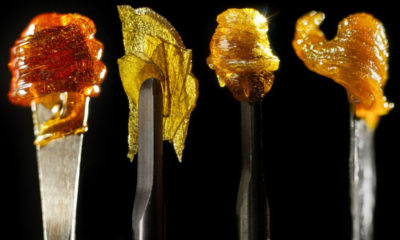
Culture
Glass Art: From Lamps to CHAMPS
The functional glass art industry faced massive obstacles during its evolution from an underground phenomenon into an economic powerhouse.
New jobs emerge in the cannabis industry every day, whether that’s in the private sector or in public service at state agencies. But one of the oldest jobs in the business looks poised to continue its renaissance in 2017, soaring on the back of legalization.
But there is simply no cutting to the front of the line as a glassblower.
The tales of this generation’s great glassblowers tend to echo each other. Many faced the same struggles over the years on the way to the top of the scene, although their shared struggles created a full spectrum of distinct artistic tastes and preferences.
Many of the most famed artists these days lived through the the early 2000s, when the DOJ under George W. Bush took an aggressive stance on enforcement against glassblowers connected even tangentially to the cannabis industry under Operation Pipe Dreams.
It’s a tough industry to enter, and most artists got their start in production work, making things like Sherlocks and spoon pipes, then working their way up to using lathes and tackling more complex tube work if they chose to go in that direction.
According to the legendary Bob Snodgrass (or “our Jerry Garcia,” as CHAMPS Glass Games Director Matty White calls him) the scene has generally trended upward for decades — minus the federal hiccups previously mentioned, and a legislative hassle here or there.
“Fast forward to the early ’90s,” he said. “A consortium of young Eugene, Oregon lamp workers descended on a Las Vegas contemporary tobacco trade show. It has never been the same again.”
Snodgrass said the industry’s most notable low point was seized upon by foreign investors.
“After the Operation Pipe Dreams trauma, many members of the exponentially growing number of lamp workers scattered and diversified,” he said. “But, to fill the bong void, foreign big money also stepped in, popping up new warehouse factories in big cities like LA and trained their people — I guess assuming the coast was clear for a decade or so. For the largest part, they cashed out when the equipment wore out and moved on.”
Despite the partial exodus of foreign producers, as Snodgrass sees it, there’s still a major import market the American glassblower has to deal with. While new events like Glass Vegas have taken the “buy American” push to the next level, the markup on some of these domestically-produced tubes is ridiculous. Selling at higher prices, the glassblower has to contend with the commercial buyer who is more concerned with a bargain than the worth of an artist’s skill set or the cost of the pricey colors that go into the most extravagant headie pieces.
Even then, you can always walk into a shop and see folks getting gouged at both the producer and consumer level. One artist was selling his signature series — some fantastic work featured in multiple publications — for $400 wholesale in Vegas. A piece from that series now sits in a California headshop with a price tag of $1,200.
While it is not easy, thanks to YouTube, you can now learn techniques from the masters without moving the family to Eugene. Also, “boro schools” around the country host guest artists for lessons, where you can learn on the torch while being supervised by experts in whatever techniques you’re hoping to learn.
Find your local glass blowing school and get on the torch!
Originally published in Issue 26 of Cannabis Now. LEARN MORE
TELL US, where do you get your glass?

























